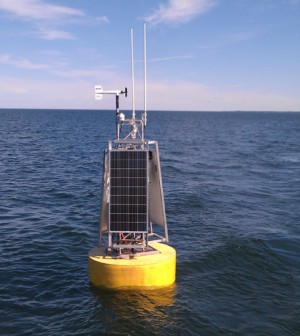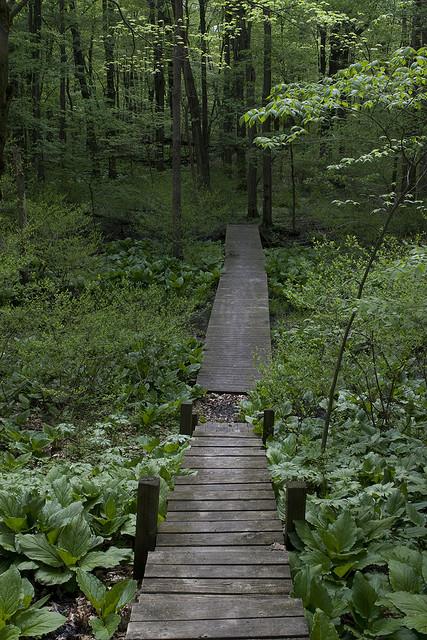Ecosystems
Lake Erie
Bowling Green State University is also in close proximity to Lake Erie and its associated wetlands and drainage systems, such as the Maumee River, which has been designated a State Scenic River. The ecological integrity of Lake Erie has been seriously compromised owing to environmental contamination, the introduction of exotic species, and the physical alteration of the basin and shoreline. Agricultural runoff and human sewage has increased phosphorus levels, leading to eutrophication. The persistence of toxic substances such as PCBs, dioxins, and DDT were implicated in the decline of bald eagles in the 20th century (bald eagles have been removed from the endangered species list, but remain a protected species under the Bald and Golden Eagle Protection Act), and in reproductive and developmental abnormalities in double-crested cormorants. The introduction of exotic species, such as zebra mussels and the macrophytic purple loosestrife, have had a profound impact on community structure. Draining, dyking and shoreline development have substantially reduced or altered the functioning of adjacent wetland habitats. The marsh areas along the southwestern shore of Lake Erie are critical for the maintenance of ecosystem function and health and are important habitat for wildlife, such as waterfowl and river otters (the latter is being reintroduced to the region). Northwest Ohio is at the convergence of two major flyways for migratory birds (the Mississippi and Atlantic flyways), and these marsh areas and their adjacent forests serve as important stopover sites for migrating raptors and songbirds. For example, Crane Creek State Park is one of the premiere birding hotspots in the country for observing the annual spring migration.
NOAA data buoy in Lake Erie

Oak Openings Boardwalk

Oak Openings
Northwest Ohio has undergone extensive land transformation during the past 100 years, however. The landscape was once dominated by diverse eastern deciduous forest types, such as elm-ash swamp forests ("Great Black Swamp"), beech forests and oak savanna ("Oak Openings"), and interspersed with prairie grasslands. Northwest Ohio has been converted to a predominately agricultural mosaic that now includes remnant forest fragments and isolated preserves of wet tallgrass prairie (Irwin State Prairie) and oak savanna (Oak Openings Metropark). The formation of the Oak Openings are closely tied to the glacial history of Lake Erie because of the presence of prehistoric beach ridges. Oak savanna represents a complex transition zone between prairie and forest, and has been reduced to less than 2% of its original distribution throughout the midwest. The Oak Openings contain more than a third of the rare plants and animals in Ohio (179 species), and is thus one of the most biologically diverse and unique habitats in the region. The oak savanna is home to the wild blue lupine, Lupinus perennis, which grows on the sandy soils, and is the host plant for the federally endangered Karner Blue Butterfly (Lycaeides melissa samuelis) which is being reintroduced to northwest Ohio.
Updated: 05/26/2022 01:54PM
